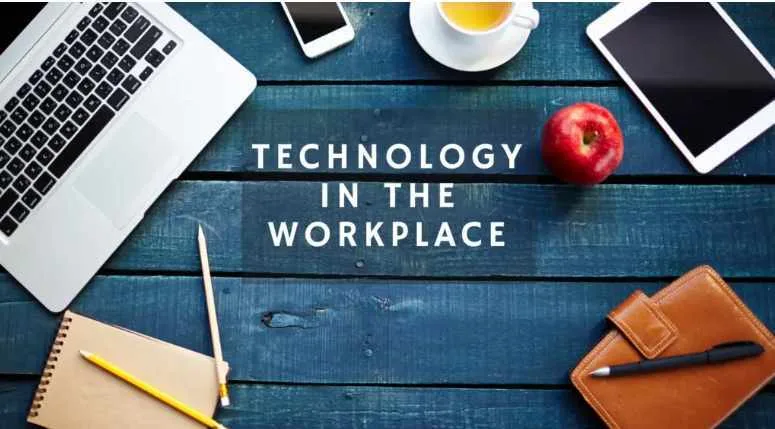The future of work is rapidly shifting towards digital collaboration and seamless implementation of new technology. With this in mind, here are a few trends that businesses should consider when planning for the future of technology in their workplaces.
In the past year, we have seen a rapid adoption of artificial intelligence, virtual reality, and other emerging technologies in offices across the globe. As these new tools continue to gain popularity in the business world, what will be coming next?
Virtual and Augmented Reality in the workplace
Virtual reality (VR) is often associated with gaming and entertainment, and Augmented Reality (AR) is often associated with fun applications that users can play with on their mobile devices. However, both of these technologies have taken a huge step towards the business world through their integration into the workplace.
VR is expected to be used in the workplace for training, marketing, product development and design, as well as many other business applications. AR is expected to be used in the workplace for marketing, sales, service, and design.
Businesses that want to capitalize on VR and AR should consider which of these technologies would be the best fit for their specific needs and choose the type of VR or AR technology that will allow them to do that.
For example, a business that wants to use VR technology to train employees on product knowledge should consider a VR application that allows them to virtually walk through a mock environment that mimics the real-life application of the product.
Artificial Intelligence in the workplace
Artificial intelligence (AI) is expected to be used in the workplace for customer service and sales, marketing, HR, and operations. Businesses can use AI in a variety of different applications that include virtual assistants, chatbots, and other computer-based tools.
When considering the implementation of AI in the workplace, businesses should think about the specific use cases for which AI could add the most value and choose the type of AI technology that would allow them to do that.
For example, a business that wants to use AI to schedule employee meetings should consider a virtual assistant application that allows users to easily drag and drop meeting times on a calendar and then have the information sent to the relevant employees.
Collaboration tools and platforms for the workplace
As businesses continue to grow and operate globally, the need for effective digital collaboration will increase. Collaboration tools will continue to play a crucial role in the business world and will have a significant impact on the future of work.
Businesses are expected to use collaboration tools for project management, customer engagement, and content creation. Collaboration tools can be implemented in a variety of different ways, including through a virtual environment where the team members are virtually located in different parts of the world and can collaborate through online tools in real time.
When considering the types of collaboration tools that businesses should use, they should think about the specific needs of their team members and choose the tool that will allow them to collaborate in the most effective way possible.
For example, a business that wants to use collaboration tools to create content with their marketing team should consider a virtual environment that allows team members to easily collaborate on content in real time.
Automated Services for Tasks in the Workplace
Robots and artificial intelligence are expected to increasingly be used for repetitive tasks, such as data entry, accounting, and customer service. Businesses can use these automated services for financial calculations, tax calculation, and other repetitive tasks that take up a significant amount of time and can be optimised through automation.
When considering the implementation of automated services for tasks in the workplace, businesses should think about the specific tasks that are currently taking up an excessive amount of time and choose the service that would allow them to automate these tasks.
For example, a business that wants to use an automated service for financial calculations should consider a tool that allows users to easily create an accurate financial forecast with just a few clicks of a button..
5 Ways Technology Can Increase Workplace Productivity
1. Take Advantage of Group Chats
2. Simplify Small Daily Tasks
3. Automate Time Tracking
4. Remote Employee Onboarding
5. Bolster Employee Engagement
The New Age of Productivity & Technology Workplace
Productivity at work is a concept that affects almost every major business metric such as operating costs, revenue, employee retention and attrition, and even customer and customer satisfaction.
It also impacts more intangible but equally important things, including company culture, work environment, employee experience and brand identity.
The reality every manager or business owner needs to accept is this: unless you are planning to downsize your operations, the demands and requirements of the workplace have nowhere to go but increase.
Fortunately, technology is constantly evolving. New tools are created to help companies improve productivity and make work more enjoyable for employees and managers.
Summary
The future of technology in the workplace will focus on digital collaboration, seamless implementation of new technology, and using technology to optimize data-driven tasks. Virtual reality, augmented reality, artificial intelligence, and other emerging technologies will help businesses to work smarter, not harder.
These technologies will help businesses to increase productivity, enhance employee engagement, and allow companies to respond to customers’ needs faster than ever before







